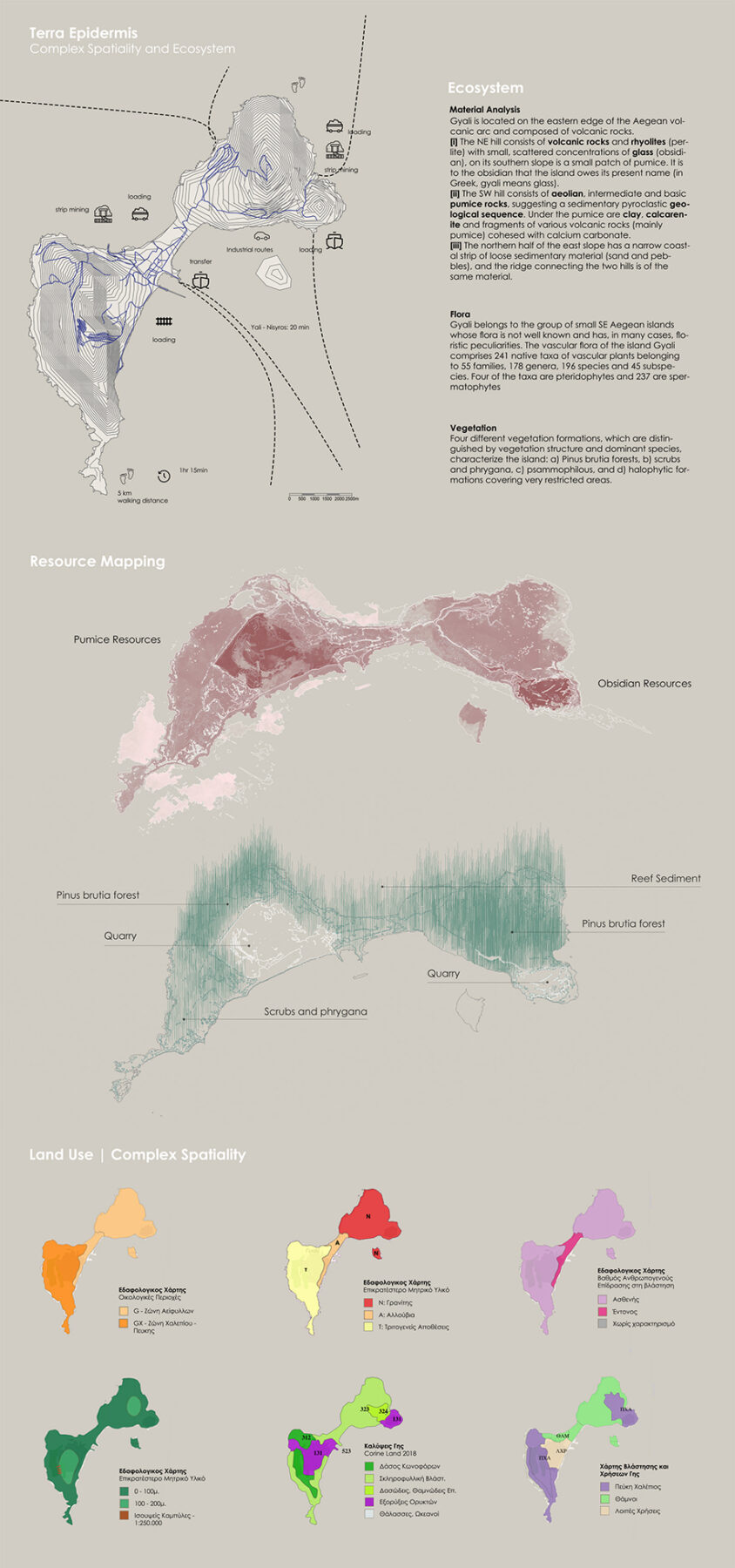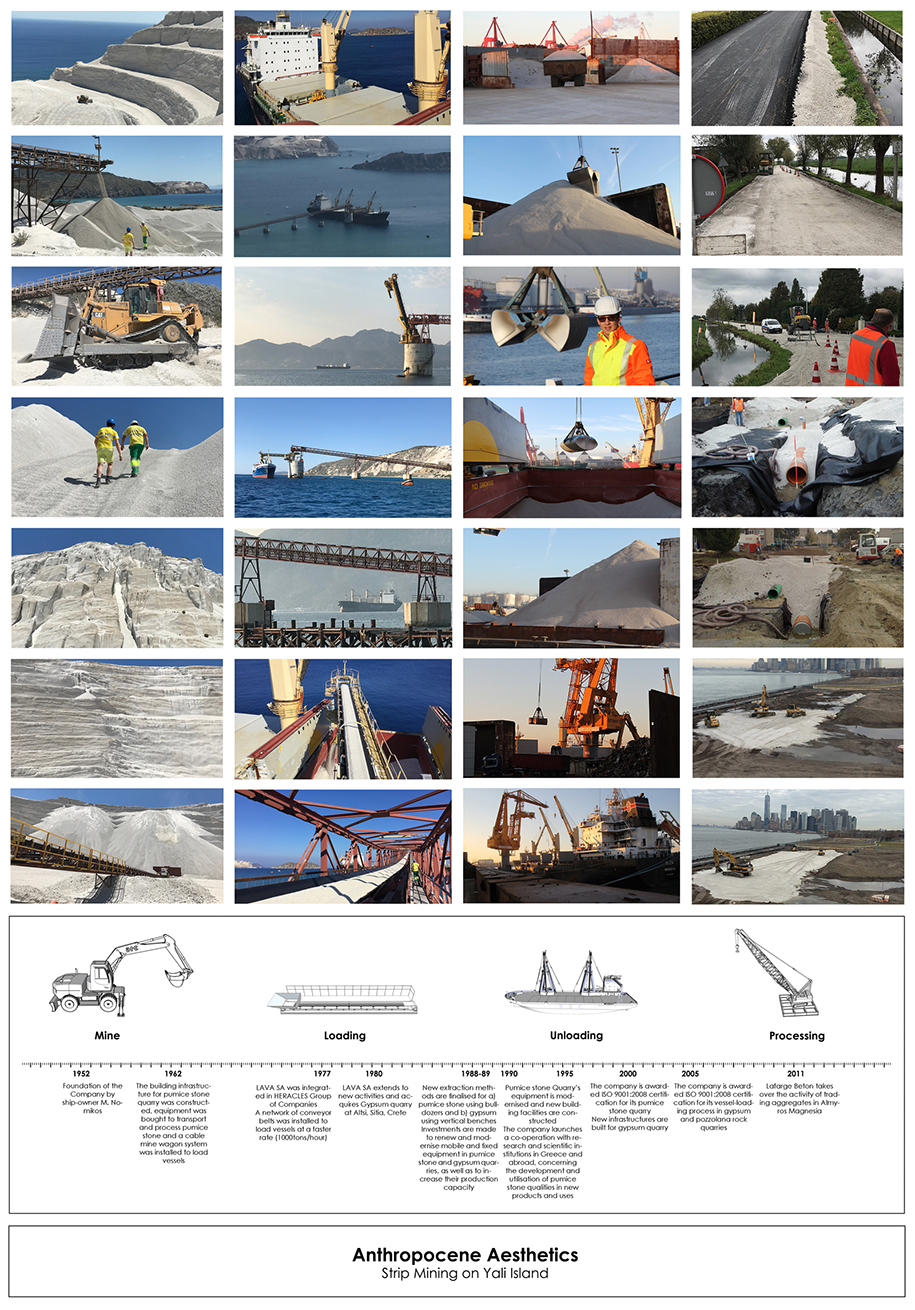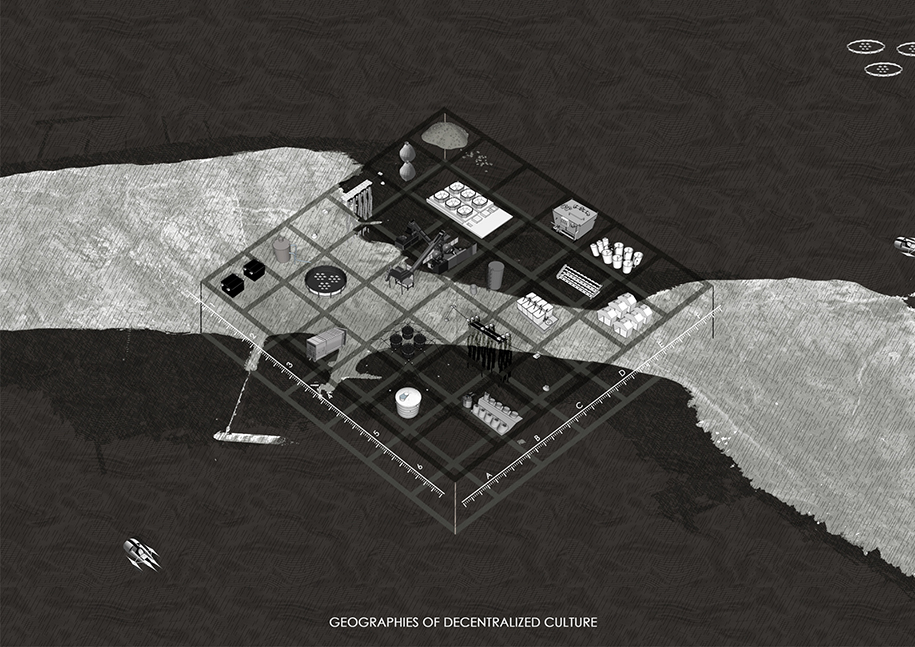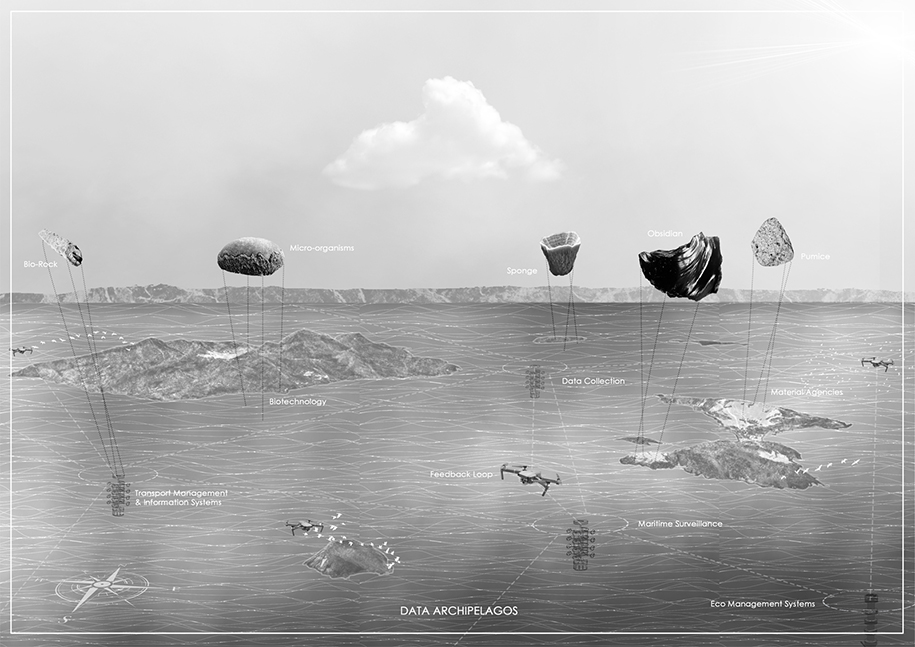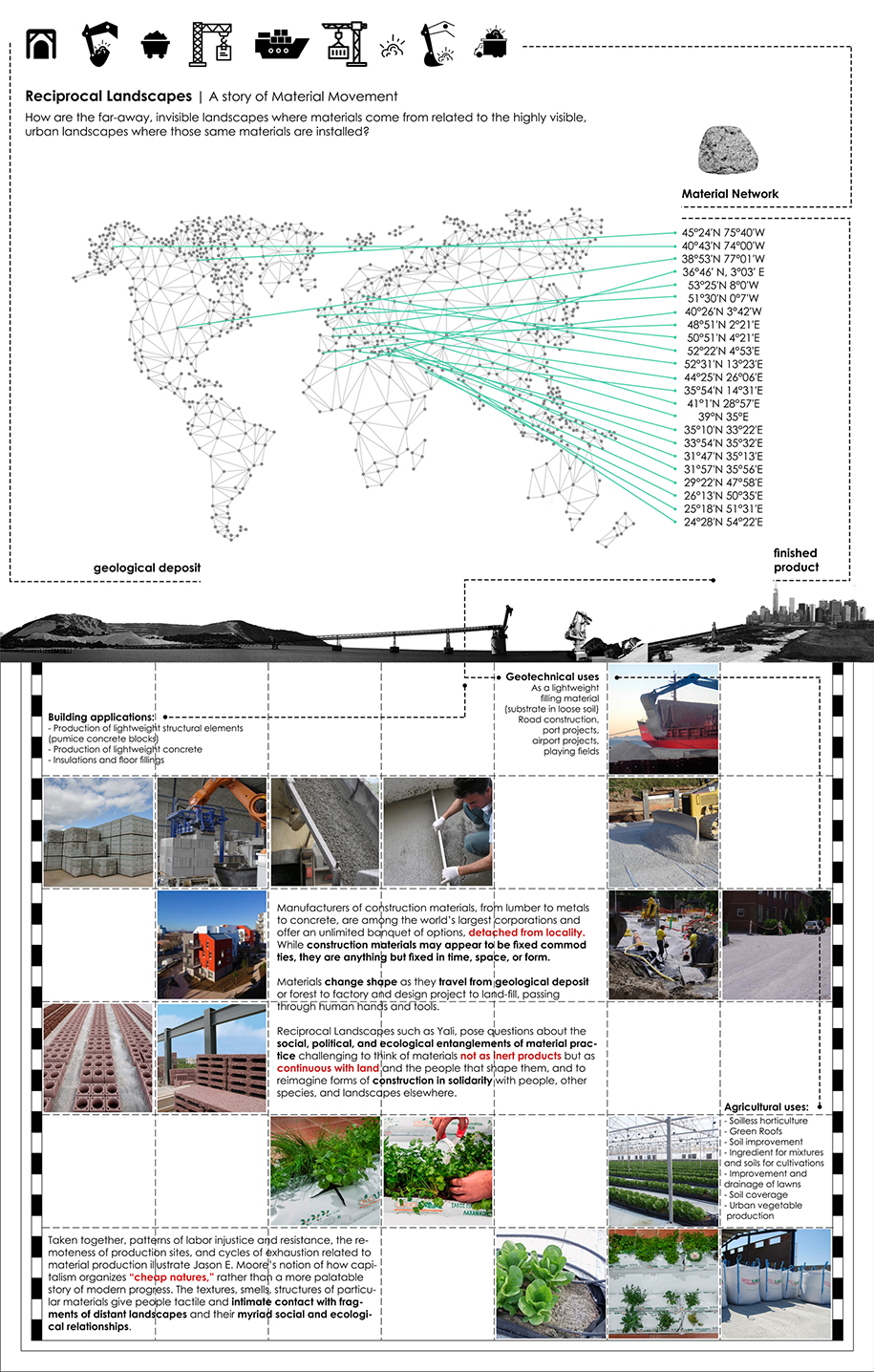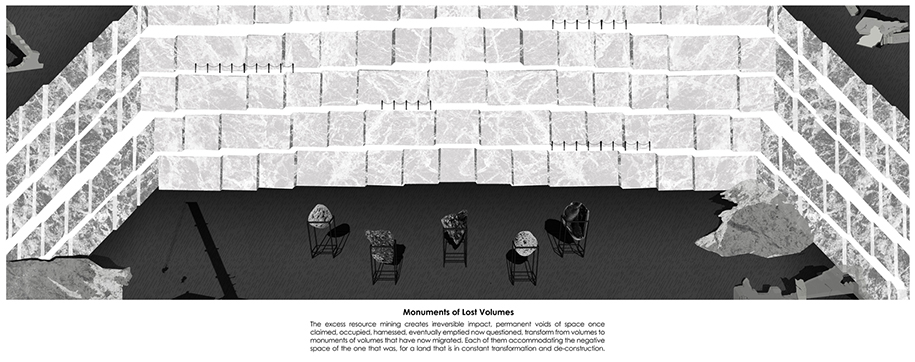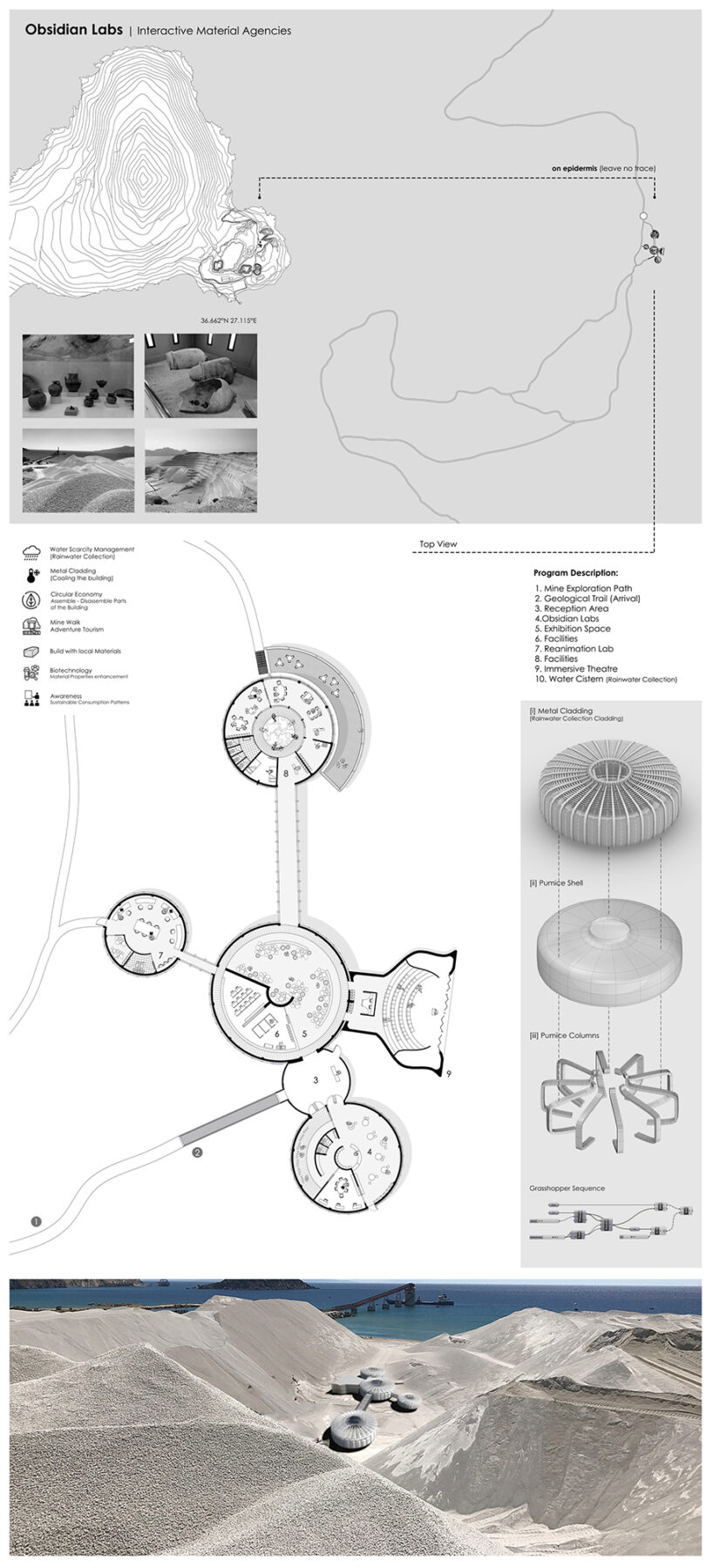The diploma thesis entitled: Post-Geographies: Ways of Inhabiting the World was presented along with the research thesis, under the same title, in the context of a larger research that was the basis and the theoretical background for the diploma thesis.
The diploma thesis examines the island of Gyali, as an environment/geography that incorporates the above, such as the intense anthropocentric activity and the relationship of man with the environment. In short, Gyali is a product of volcanic activity (flow). It belongs to the Dodecanese and is administered by the municipality of Nisyros. It is located between Kos and Nisyros. The northeastern part consists largely of a lava dome made of rheolithic obsidian, while the southwestern part of pumice, which was formed by erupting volcanic ash. In the northeast of the island, perlite is mined by Aegean Perlites SA. In the southwest of the island, the company manufactures pumice LAVA – Mining & Quarrying Co. and is the largest Bimssteine exporter in the world. Gyali is the largest Greek pumice reservoir with over 120 million tons.
-text by the authors
In August 2020 I visited the Archaeological Museum of Nisyros and there I came across a legend. According to Greek mythology, Nisyros was created during the Battle of the Giants, when the god Poseidon, in pursuit of the giant Polyvotis, cut a piece of Kos and crushed it. Since then, the giant, according to legend, lives under the island, sighing in his attempt to escape. The myth certainly reflects the volcanic activity that existed in Nisyros since antiquity.


The volcanic evolution of Nisyros began about 160,000 years ago and with different eruption cycles creating a volcanic complex. Its geology has been described by many researchers who divide the volcanic activity of Nisyros into different stages of evolutio
Nisyros is the newest of the major volcanic centers of Greece and is included along with Methana, Milos, and Santorini in the active volcanoes of our country. Most of the island of Nisyros is mountainous, volcanic, and very fertile. The base of the island is formed by glass-lava flow and rocks. The rocks are covered with pyroclastic deposits and volcanic domes.
Volcanoes have many dramatic ways of announcing their presence. One of the most subtle and rarely observed displays is the pumice raft. Floating rafts made of volcanic pumice have probably played an important role in the origin of life on Earth. Pumice has a unique set of properties that would make it an ideal environment for the first organisms to appear on Earth 3.5 billion years ago. These properties suggest that it could have created an ideal ‘floating laboratory’ for the growth of the first microorganisms.
August 2020: In Nisyros one can come in contact with a strange landscape, a landscape that only a few are aware of. The first image was captured the moment when as a visitor, in Mandraki of Nisyros, I turned my gaze to the horizon. My gaze fell on white hills and then on a dense forest. This island had an uncanny look. It is located between Kos and Nisyros and its name is Gyali (or Istros as it was called before).
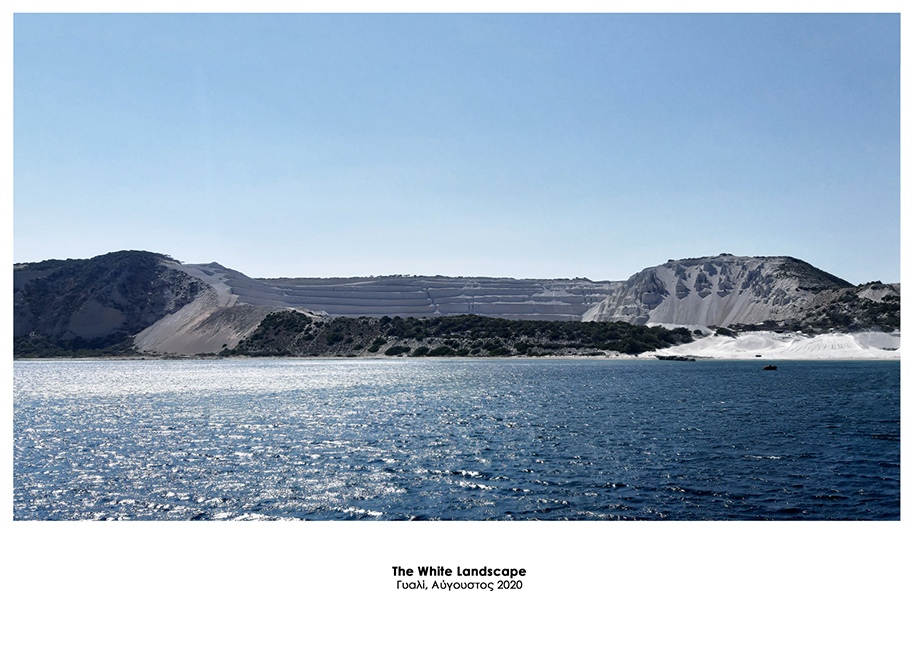
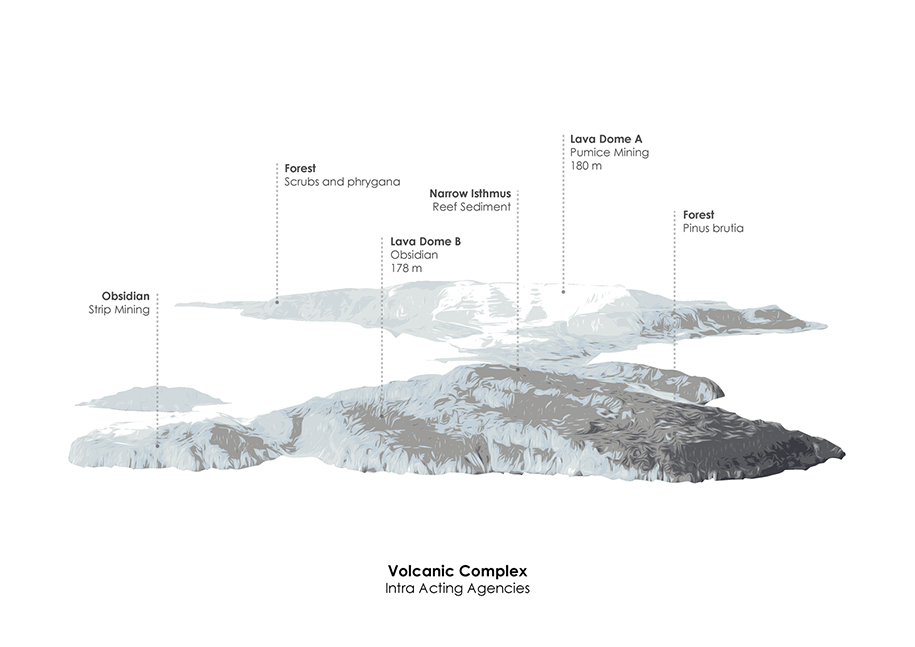
Giali belongs to the Dodecanese and is administered by the municipality of Nisyros. It has an area of 4.6 square kilometers. The landscape is formed by two hills 182 m high in the northeast and 179 m high in the southwest, and are connected by a land bridge that is only 250 meters wide. The northeastern part consists largely of a lava dome made of rheolithic obsidian, while the southwestern part of pumice, which was formed by erupting volcanic ash.
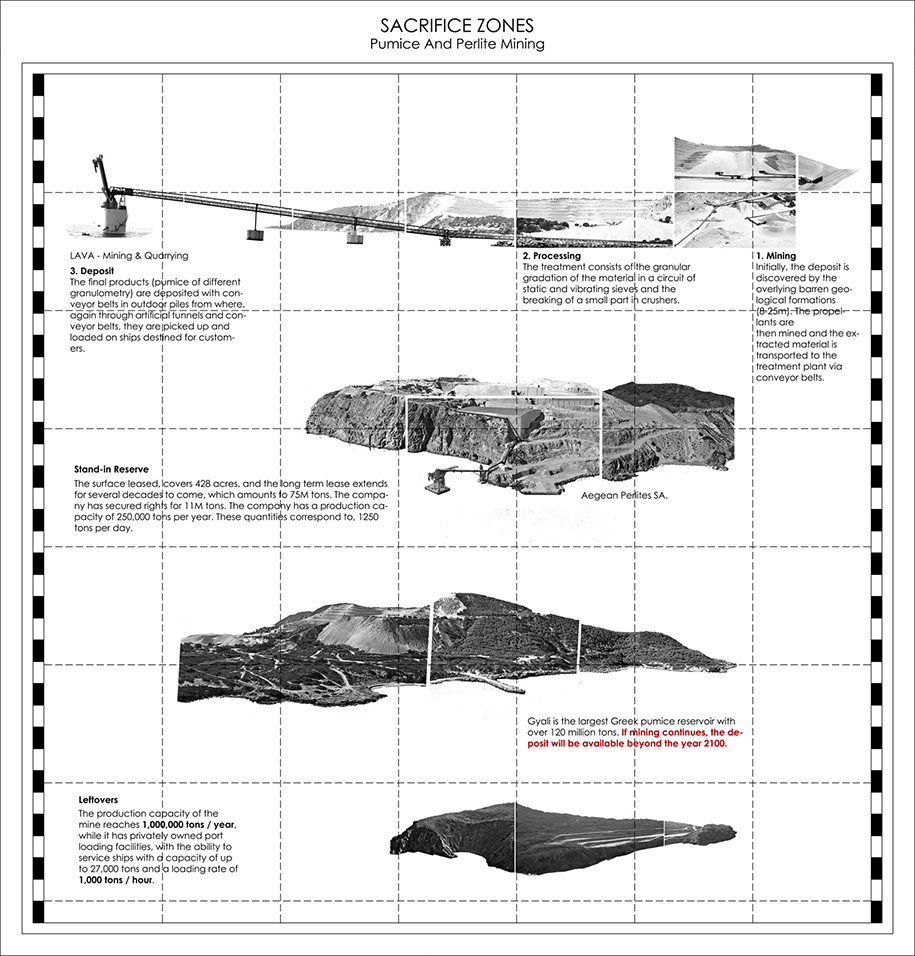
In the northeast of the island, perlite is mined by Aegean Perlites SA. In the southwest of the island, the company manufactures pumice LAVA – Mining & Quarrying Co. and is the largest Bimssteine exporter in the world. Giali is the largest Greek pumice reservoir with over 120 million tons.
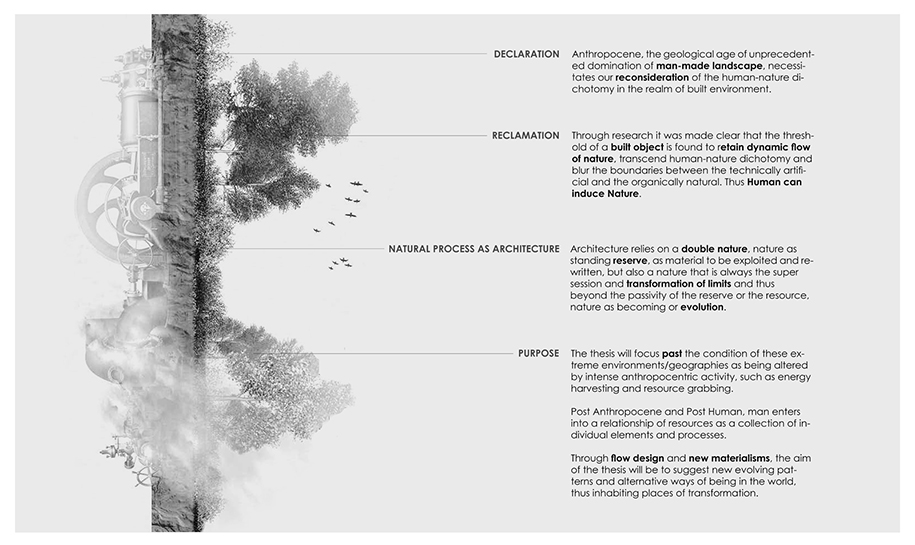
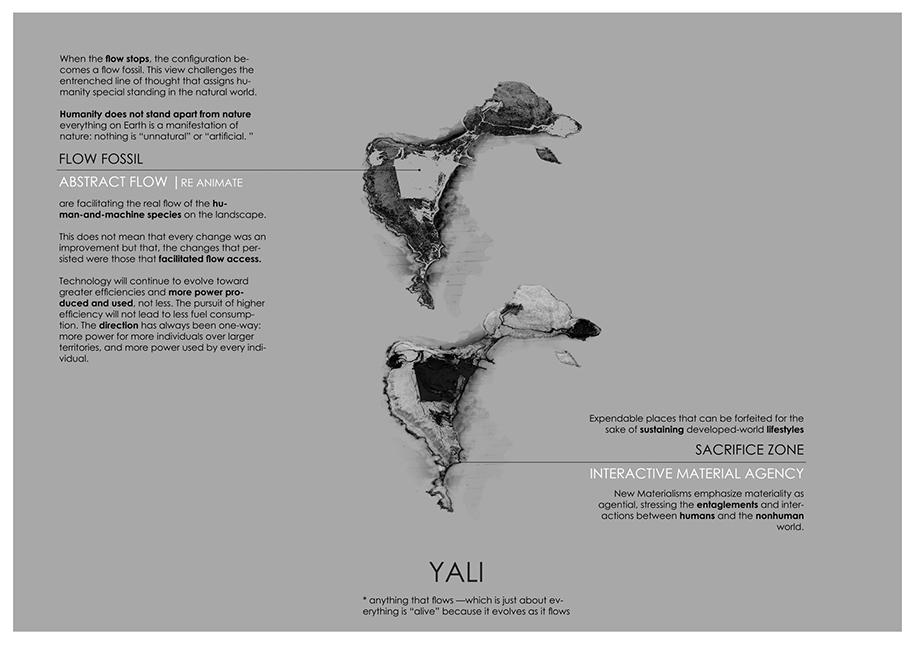
The constructal law allows us to take an important step towards this research. It teaches us that everything that flows, that concerns almost everything, is “alive”, because as it flows it evolves. According to Adrian Bejan, life is a persistent movement and a mechanism by which animate and inanimate flow systems are transformed to provide better access to what flows. When a flow stops, its formation turns into a “flow fossil”.
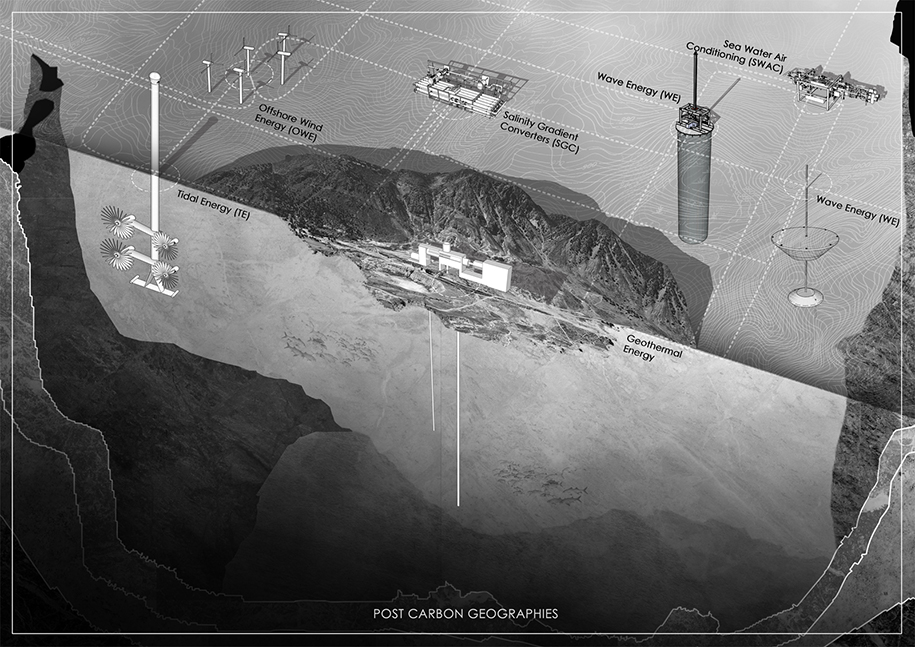
Post Carbon geographies lay the groundwork for a step forward in the development of the Mediterranean and for a more sustainable use of marine resources. The Mediterranean, with its unique cultural and natural heritage, local biodiversity and geo-natural features, provides important local opportunities for growth and jobs in various fields. At the same time, as a whole, it is subject to environmental constraints related to climate change and pollution and often suffers from the rare management of its resources.
Renewable marine energy has the potential to improve the efficiency of marine energy resource collection, minimize energy land use requirements and reduce greenhouse gas emissions.
Also, important economic activities are based on the maritime landscape of the Mediterranean, such as: fisheries and aquaculture, maritime transport and port activities, tourism and leisure activities, biological exploration or exploitation of biological resources. exploitation of energy sources, etc.
These economic activities pose particular threats to the health of the Mediterranean, such as: (i) acidification, rising sea temperatures, changes in currents, loss of resources and biodiversity habitats; (ii) pollution; and (iii) overfishing and other sustainability issues. and resource efficiency. In this context, a sustainable and inclusive economy is even more necessary, with low pollutants, resource efficiency and cyclical characteristics. A sustainable and inclusive economy can make a positive contribution to the development of the Mediterranean region.
Data Archipelagos (i) involves the provision to stakeholders of ways of exchanging information and data and (ii) involves the application of science and technology to the production of knowledge, goods, and services from (marine) biological resources. It also includes the exploitation of living organisms (algae, microalgae, sponge, bacteria, etc.), engineering, technology, and other areas that require organic products. At the same time, concerns about the impact on land use and water needs of terrestrial crops grown for biofuels are driving efforts to explore the use of algae as a source of biofuels, along with high value-added chemicals and bioactive compounds.
How do the distant, invisible landscapes from which materials originate relate to the highly visible, urban landscapes where these same materials are located?
It would be a test to think of materials not as inert products but as continuous with the earth and the people who shape them, in order to re-imagine forms of construction in solidarity with people, other species and landscapes elsewhere. While building materials may seem to be fixed commodities, they are anything but fixed in time, space or form. Materials change shape as they travel from geological reserves through human hands and tools.
The production of different building materials requires different types of work. Mining, for example, is attributed to very different physical energies, responsibilities and environments. All of this together, patterns of labor injustice and resistance, the remote location of production, and the cycles of exhaustion associated with material production all point to Jason E. Moore’s idea of how capitalism organizes “cheap natures” rather than a more delicious history of modern progress. The textures, the smells, the structures of specific materials give people a tangible and intimate contact with fragments of distant landscapes and their myriad social and ecological relationships.
In the beginning, this project examines the spatial long duration of Yali’s materiality and its relationship to the landscape. From the extraction of raw materials on Yali Island to their processing, transport, and absolute use as a building material. The materials become finished effects and purposes, as seen in the streets, parks, and cultivation techniques, which will later be demolished, turned into waste, and decomposed. The spatial and temporal extent of the importance of the island is very large (geographical) and deep (geological).
Framing the geographical scale of Yali Island as an experiential condition, the project opens a conversation between materiality and architecture and their relationship to strategies such as soil geometries, resource extraction fields, energy geographies, etc. architectural consciousness. In this context, the project gives new interpretations to large-scale design and its impact over time, while creating new relationships between human and non-human actors.
While this island has inherited its material properties as a heritage of the volcano and was “placed” geographically in a natural way, its continuous extraction and depletion of materials distribute these properties around the world making the material agency of the island material-less. Seeing mining as an architectural tool, this project proposes territorial transformation in response to economic, social, energy, and political demands, while providing stability to this fluidity. With the dynamic mining process and the redistribution-use process based on a “functional lifespan”, the landscape is expected to constantly re-examine, re-use, and reinvent itself.



The idea of “Huts” introduces the idea of “interactive material agencies”. This raises the idea that every structure has an inherent lifespan based on the program it houses and not the physical condition that is worth maintaining. But also, new materials allow engagement with nonhuman agencies, paving the way for hybrid geographies of the post- and inhabiting places of transformation.

Facts & Credits
Project title Post- Geographies: ways of inhabiting the world
Typology Student project
Completed March 2021
Course Diploma thesis
Supervisors Polyxeni Mantzou – Dimitris Giouzepas – Nikolaos Thomas
Student Panagiotis Kalantzis
Institution Democritus University of Thrace, Faculty of Architecture
READ ALSO: CryptoGAN | Diploma thesis project by Panagiotis Kalaitzidis, Pooja Harumalani, Aijia Wang




